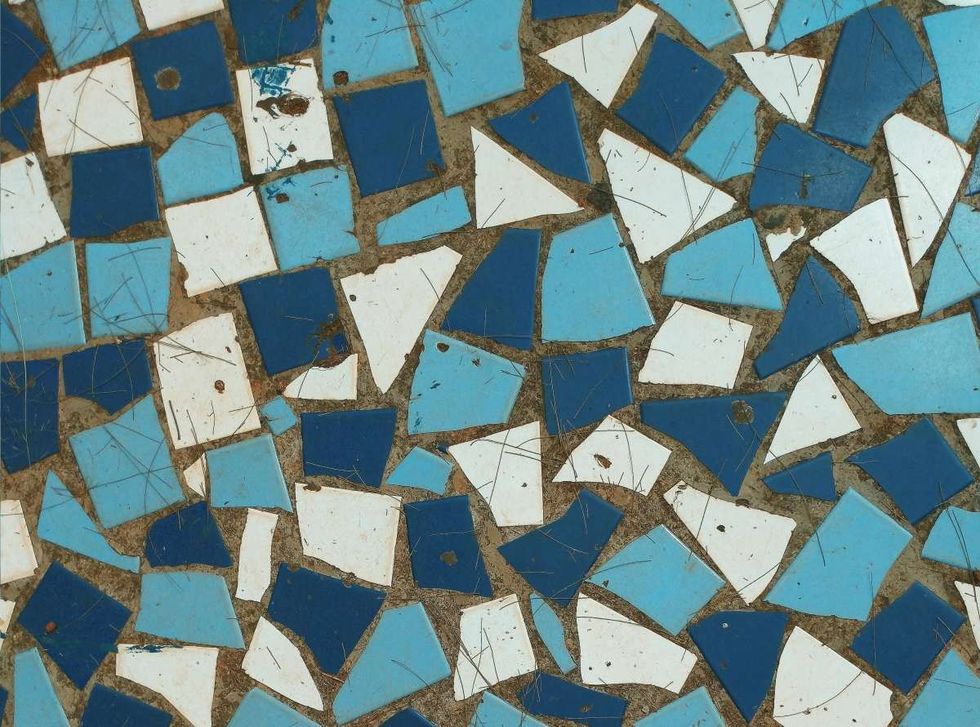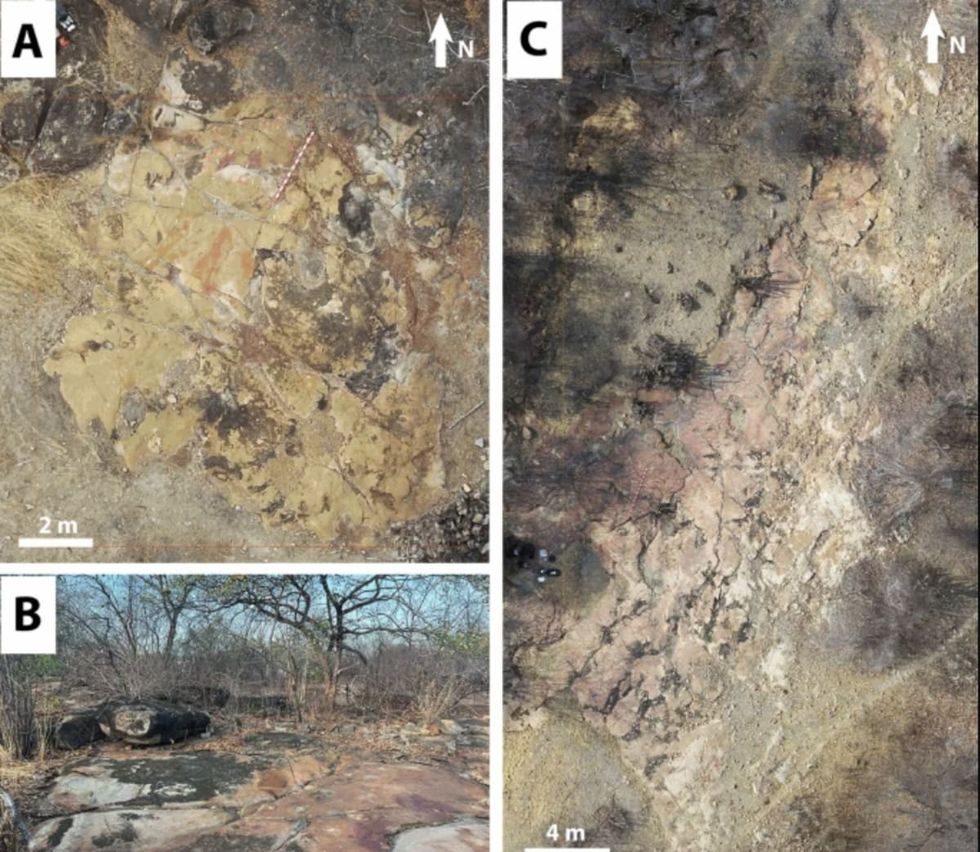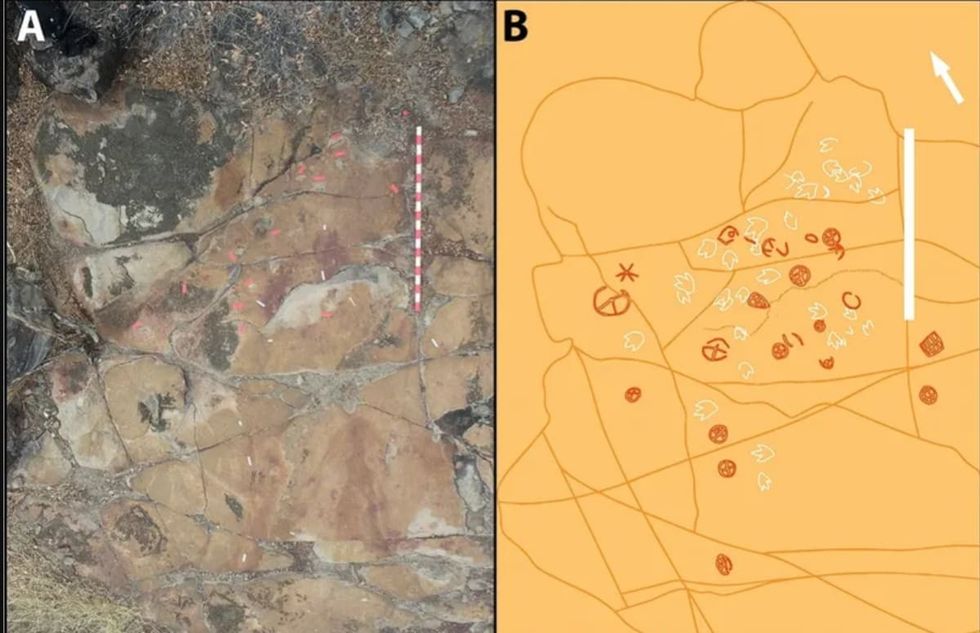Today, shoals of fish swim above the remnants of a vibrant marble mosaic floor, once the setting for lavish gatherings of Rome's elite. In the 3rd century CE, some of Rome’s wealthiest citizens hosted extravagant parties in Baiae, an ancient holiday resort near Naples, Italy, often referred to as the “Las Vegas of ancient Rome.” Archaeologists recently uncovered this striking mosaic floor in the sunken city of Baiae. The Archaeological Park of the Phlegraean Fields shared underwater images on Facebook, announcing their ongoing efforts to restore the mosaic.
“Thousands of marble slabs, hundreds of different shapes, gathered to create a very articulate geometry,” the diving archaeologists noted in the Facebook post, describing the find.

The city of Baiae was located in the Gulf of Naples, close to where the famous remains of the city of Pompeii stand, per IFL Science. In the past few years, archaeologists and divers stumbled upon an assortment of ancient relics sprawling inside the underwater sunken city, but the discovery of this stunning marble floor revealed secrets of the city like no other. Interestingly, most of the relics found on the seabed, including statues and floor fragments are in relatively good shape. The fragments are currently being restored. However, this restoration is “a challenge, very complicated, due to the extreme fragment of the remains and their large expansion,” the archaeologists mentioned in the post.
They classified the ornate mosaic as “opus sectile,” which, according to IFL Science, is “a mosaic work composed of various colored materials such as marble, shell, mother-of-pearl, and glass, which are cut into specific shapes and inlaid to create different designs and patterns.” The recovered opus sectile was once a Roman-era porch at the building’s entrance, as per a statement from the Campi Flegrei Archaeological Park. It could also have extended as the floor of a reception room for a villa probably owned by a wealthy or esteemed Roman personality. The owner must have spent a huge bounty of money to get this design created as the design is too intricate and “consists of multiple sharpened squares, each surrounded by inscribed circles.”
Now a sunken city, Baiae typically had a reputation for being a fashionable haven for rich Roman epicureans. Many stories also relate that even people like Julius Caesar, Nero, Cicero, Cleopatra, and Hadrian walked this fractured groundwork that was once a royal floor. John Smout, a researcher who studies the site along with archaeologists, claimed that Cleopatra once visited the city.
He told The Sun, "Rumour has it that Cleopatra escaped in her boat from Baiae after Julius Caesar was murdered in 44BC, while Julia Agrippina plotted her husband Claudius’ death at Baia so her son Nero could become emperor of Rome."

But good times didn’t last long as the city soon turned into a sequestered hideaway for people's self-indulgent activities. Stoic philosopher Seneca was even recorded as saying it was a “place to be avoided” due to its vice. "Though it has certain natural advantages, luxury has claimed it for her own exclusive resort. To witness persons wandering drunk along the beach, the riotous reveling of sailing parties, the lakes a-din with choral song, and all the other ways in which luxury, when it is, so to speak, released from the restraints of law not merely sins, but blazons its sins abroad—why must I witness all this?" these were the exact words of Seneca, per Newsweek.

But it was not this lifestyle that ultimately brought doom to the city. It was the geological processes, followed by invasions from Muslim armies. A volcanic activity pushed the city below the sea level and it got submerged underwater. This region is home to a supervolcano which a researcher described to BBC as “a bubbling pool of dull gunmetal-grey mud, ominous as the contents of a witch’s cauldron and a great deal louder.” In the 16th century, this resort, overlooking the supervolcano, collapsed into the Gulf of Pozzuoli, due to a geological phenomenon called “bradyseism,” in which, “the ground sinks or rises due to pressure changes under the earth’s surface,” The Smithsonian explains.
Researchers are now collecting fragments to bring to their laboratory and analyzing them by removing salts. Expressing his excitement over the discovery of this marble floor, Bacoli’s mayor Josi Gerardo Della Ragione, wrote a post. “The floor in opus sectile, with its elaborate geometric motifs and extraordinary craftsmanship, offers a fascinating window into the life and art of ancient Rome,” he said, per the translation. “This discovery allows visitors to immerse themselves in history, exploring the hidden wonders beneath the surface of the sea.”

















 File:Ralph Waldo Emerson House (Concord, MA).JPG - Wikimedia Commons
commons.wikimedia.org
File:Ralph Waldo Emerson House (Concord, MA).JPG - Wikimedia Commons
commons.wikimedia.org


 Pictured: The newspaper ad announcing Taco Bell's purchase of the Liberty Bell.Photo credit: @lateralus1665
Pictured: The newspaper ad announcing Taco Bell's purchase of the Liberty Bell.Photo credit: @lateralus1665 One of the later announcements of the fake "Washing of the Lions" events.Photo credit: Wikimedia Commons
One of the later announcements of the fake "Washing of the Lions" events.Photo credit: Wikimedia Commons This prank went a little too far...Photo credit: Canva
This prank went a little too far...Photo credit: Canva The smoky prank that was confused for an actual volcanic eruption.Photo credit: Harold Wahlman
The smoky prank that was confused for an actual volcanic eruption.Photo credit: Harold Wahlman
 Packhorse librarians ready to start delivering books.
Packhorse librarians ready to start delivering books. Pack Horse Library Project - Wikipedia
Pack Horse Library Project - Wikipedia Packhorse librarian reading to a man.
Packhorse librarian reading to a man.
 Fichier:Uxbridge Center, 1839.png — Wikipédia
Fichier:Uxbridge Center, 1839.png — Wikipédia File:Women's Political Union of New Jersey.jpg - Wikimedia Commons
File:Women's Political Union of New Jersey.jpg - Wikimedia Commons File:Liliuokalani, photograph by Prince, of Washington (cropped ...
File:Liliuokalani, photograph by Prince, of Washington (cropped ...
 Theresa Malkiel
commons.wikimedia.org
Theresa Malkiel
commons.wikimedia.org
 Six Shirtwaist Strike women in 1909
Six Shirtwaist Strike women in 1909
 U.S. First Lady Jackie Kennedy arriving in Palm Beach | Flickr
U.S. First Lady Jackie Kennedy arriving in Palm Beach | Flickr
 Image Source:
Image Source:  Image Source:
Image Source:  Image Source:
Image Source: